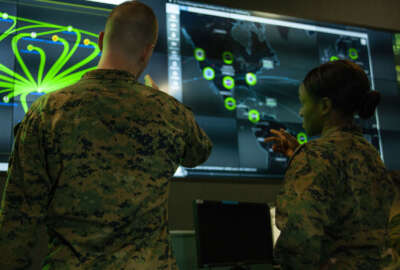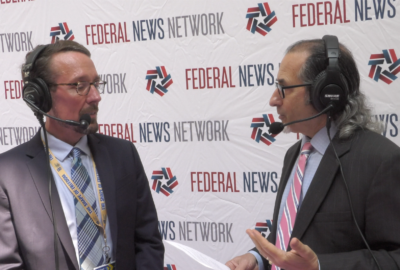CDAO expanding data integration layer for CJADC2
The CDAO's minimum viable capability for the Pentagon’s Combined Joint All-Domain Command and Control initiative is up and running.
The Chief Digital and Artificial Intelligence Office’s minimum viable capability for the Pentagon’s Combined Joint All-Domain Command and Control initiative is up and running. The office is now getting ready to bring in more companies.
The CDAO will spend the next three to six months developing a set of requirements that will allow more companies to contribute to the expansion of the data integration layer.
“We’ve been doing this with key industrial partners, mostly Palantir and Anduril. The technology that we’ve built — it’s there, it’s available. That’s why we call it a minimum viable capability. We then need to build out a set of requirements that allow other industrial partners to join in,” CDAO’s chief Craig Martell said during the House Armed Services Cyber, Information Technologies, and Innovation Subcommittee hearing Friday.
CJADC2, more broadly, aims to use data, cloud, artificial intelligence and much more to connect all military assets and enable faster decision-making.
When Martell assumed his role as the CDAO’s chief in 2022, Deputy Defense Secretary Kathleen Hicks tasked the office with launching the Global Information Dominance Experiment, also known as GIDE.
Last year, the CDAO office held several GIDE events. The primary goal was to deliver a joint data integration layer allowing INDOPACOM, CENTCOM, NORTHCOM, their components and international partners to access and exchange data. The last iteration of the experiment resulted in the minimum viable capability for CJADC2.
“We’ve been building out the prototype of what it would mean for the hardware to support the flow of data across combatant commands so combatant commands have a unified picture of what’s going on in the world,” Martell said.
“We do it every 90 days to these guided exercises, as the key learning exercise to understand through Wargaming what combatant commanders would need to see and what all of the components under the combatant commanders would need to see, would need to exchange and how data would need to flow in order for it to go from swivel chair and PowerPoint and email to digital data flows as that information goes across the combatant command and within the combatant commands,” he added.
The Pentagon has been vague about the applications or the regions the minimum viable capability is currently being used.
During the hearing, Martell was also asked about the possibility of his office having direct authority over the military services and their development of CJADC2 solutions.
“I’m not a fan of that. And I’m not a fan of hard authority there. Let me just say, in general, the center should provide oversight and policy and best practices. The edge knows their problems best. Solving the problems from the center and imposing it upon the edge, I think is dangerous. It’s going to create a one-size-fits-all solution,” said Martell.
He said there has to be authority about the interface, which will allow the right data to flow out of the services. The Army-led Project Convergence and the Navy’s Project Overmatch, for example, aim to find solutions for the ways data would flow.
“What we’ve been doing is putting the tech before the policy. To allow the data to flow is going to force the right questions. Then there’s going to be an increased demand for data to flow. And then we can say, ‘Well, that now is a policy issue that we can tackle,” Martell said.
“The change is not going to my very strong opinion, that change is not going to happen by some large a priori view, a philosophical view of the way the world should be, and then trying to implement that.”
Copyright © 2025 Federal News Network. All rights reserved. This website is not intended for users located within the European Economic Area.








